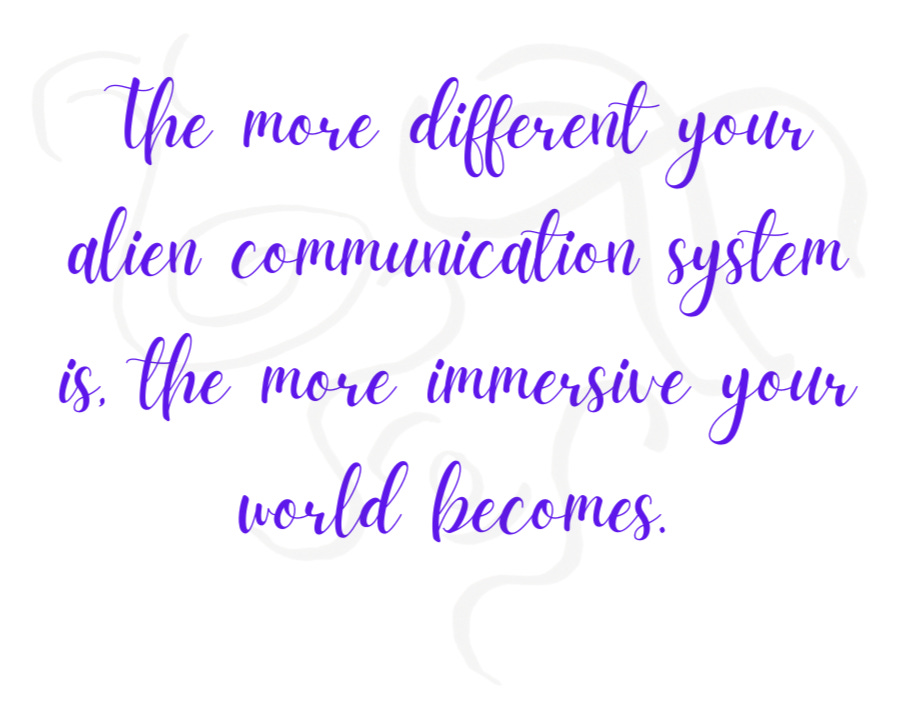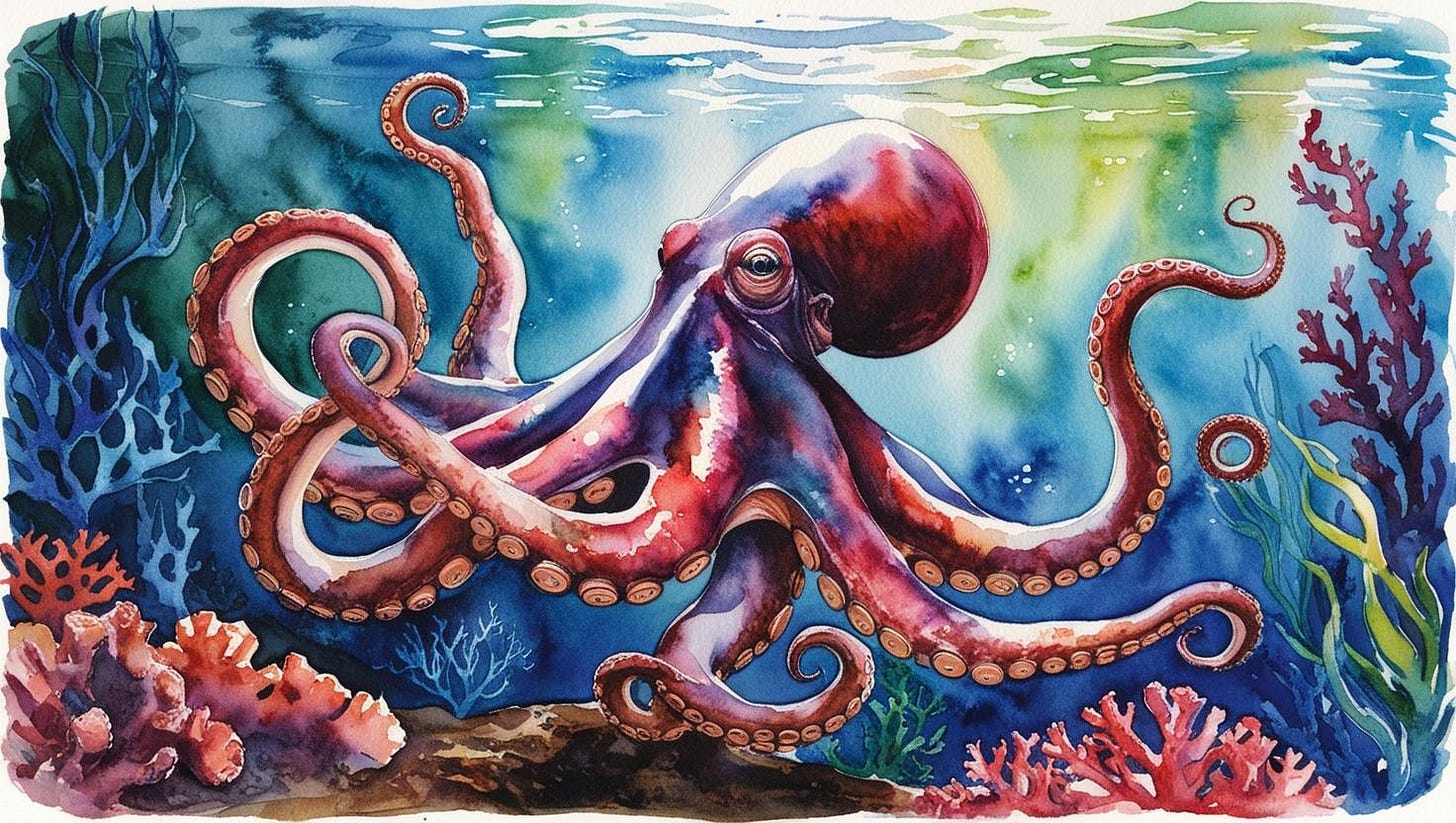Whale's Song - Part 4
Designing Alien Language in Fiction
In Part 1, we set the stage for developing extraterrestrial communication by looking at the basics of communication, language and conversation.
In Part 2, we examined human bias in linguistic models and how it may stifle our ability to communicate across species.
In Part 3, we saw how scientists are actively decoding non-human languages—and what that might mean for our search for extraterrestrial intelligence.
Here, in Part 4 we further encourage basing our imagined alien lingo in fiction within something a little more reality-based than the once popular ‘universal translator’.
Part 4: Designing Alien Language in Fiction
Designing alien languages means letting go of human expectations. So let’s get creatively practical.
Avoiding Human-Centric Bias in Alien Language Design
In Part 2, we explored how human linguistic models might not be the best lens for interpreting non-human communication. If we struggle with translation across human cultures, how much harder would it be for an intelligence that doesn’t use words at all?
Take, for example, a famous mistranslation from 1956. Soviet leader Nikita Khrushchev was addressing Western diplomats when he reportedly stated, “We will bury you.” (Мы вас похороним!). The phrase, taken literally, sent waves of panic through Cold War tensions. However, context matters. Khrushchev was referring to Marxist ideology, not military aggression—suggesting that capitalism would collapse under its contradictions, not that the USSR would destroy the West.
If a single phrase between humans can be wildly misinterpreted, imagine the challenge of decoding a non-human message—especially if that message doesn’t fit our definition of “language.”
When even shared language and culture can result in dangerous misunderstanding, the stakes of alien misinterpretation rise exponentially.
As writers, we should avoid these same biases when constructing alien communication systems.
Organizations like CETI and Whale-SETI are already revealing how sperm whale clicks and humpback whale songs challenge human assumptions.
Building Alien Communication Systems from Scratch
Writers are experts at crafting worlds and characters, but alien language design often falls into familiar traps. Why limit ourselves when so many real-world models exist beyond human speech?
Octopuses can flash patterns across their skin to express threat, curiosity, or emotion. Bees dance in figure-eights to tell hive-mates where to find nectar. These are languages—just not ours.
Image created @Canva
Sound-Based Communication → Whale song, echolocation, rhythmic clicks. What if an alien species “sang” across space?
Motion-Based Communication → Bioluminescent pulses (like firefly squid), body signals (tail wags, wing gestures). What if communication was purely visual?
Biochemical Language → Pheromones, scent markers, neural transmission. What if meaning could be smelled rather than heard?
Avoiding Cop-Outs: Universal translators and instant telepathic understanding remove the richness of first contact narratives. The more different your alien communication system is, the more immersive your world becomes.
Case Study: The Biet Lagos Language & How It Was Designed
A signal. A pattern of clicks, echoing across space. At first, it’s just noise—until xenolinguist Jayla Finn realizes it’s something more.
World Beyond the Stars by JL Tooker, © 2024
Without spoiling too much, my Biet Lagos species from the planet Mycte communicate through symbols, bioluminescent pulses, and sounds. As I was designing their language, I affectionately called it my “Whales in Space” concept.
I drew inspiration from ancient cuneiform, where each wedge mark acts like a beat or click, much like sperm whale codas. Over time, I began to see patterns emerging— much like how humans might recognize linguistic structures in an unknown script.
Here’s a sneak peek at the Biet Lagos written language:
Biet Lagos Language Images © JL Tooker 2024
What do you think it might mean? Let your intuition lead—drop your theories in the comments, and I’ll share the answer in a future post.
Here is what the same ‘message’ might look like if translated into cuneiform glyphs:
𒋡𒁍 𒀀𒈾
Does that help? Do you have a better guess at what it means now?
A full breakdown of this imagined language structure will be published in a separate article, but for now, consider:
What if the key to understanding an alien language isn’t in spoken words at all, but in patterns we’ve known for millennia?
What if an advanced species encoded their messages in ways we’ve already seen—in the rhythmic beats of whales, or in the wedge-shaped symbols of an ancient script?
If language is about conveying meaning, then perhaps the best way to create an alien language isn’t to invent something new, but to rediscover something old.
“Perhaps it’s not the words that matter—but the pulse behind them.”
Final Thoughts
When designing alien languages, let go of human assumptions. Think beyond words. Think in rhythms, symbols, and pulses. Because maybe, just maybe, the first message we understand may not sound like anything at all—but it may echo like a pulse we’ve known forever.
REMEMBER: Resources & Readings for The Whale’s Song can be found here.
Coming Next
In Part 5 of The Whale’s Song, we’ll examine the limits of artificial intelligence when it comes to language—and why translating alien communication may be more complex than flipping a switch.
We’ll explore how AI is helping scientists decode whale song, what it’s getting right, and where it might be leading us astray. Could machine learning be the key to extraterrestrial contact? Or are we just programming our own assumptions into the stars?
Let’s look at the promises—and the pitfalls—of letting AI speak for us.











This whole series is brilliant! And I'm irresistibly reminded of some of Kurt Vonnegut's aliens, who communicated by farting and tapdancing. I'm pretty sure some humans would be able to figure that out.